Click on images to enlarge
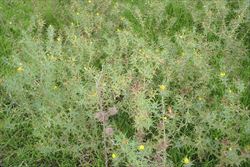
infestation (Photo: Sheldon Navie)
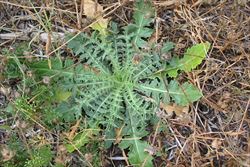
basal rosette of lower leaves (Photo: Sheldon Navie)
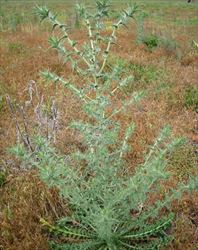
branching habit just prior to flowering (Photo: Sheldon Navie)
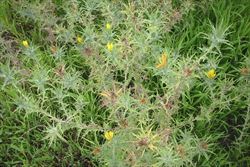
habit in flower (Photo: Sheldon Navie)
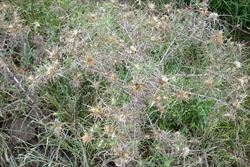
habit of old plant (Photo: Sheldon Navie)
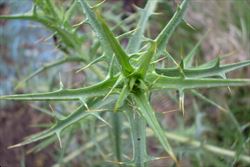
spiny upper leaves (Photo: Sheldon Navie)
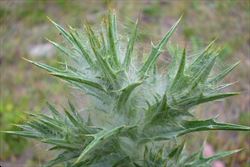
close-up of cobwebby nature of young growth (Photo: Sheldon Navie)
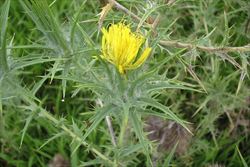
flower-head (Photo: Sheldon Navie)
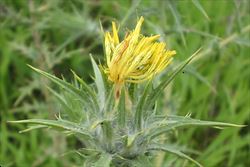
close-up of flower-head with spiny bracts (Photo: Sheldon Navie)
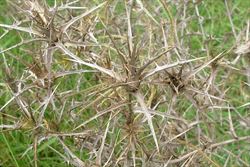
old leaves and flower-heads (Photo: Sheldon Navie)
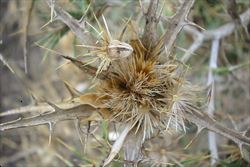
close-up of mature flower-head with seeds (Photo: Sheldon Navie)
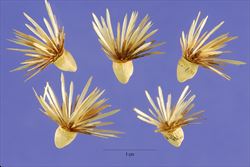
close-up of seeds topped with numerous elongated scales (Photo: Steve Hurst at USDA PLANTS Database)
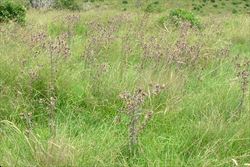
infestation of old plants in a pasture near Kilcoy (Photo: Sheldon Navie)
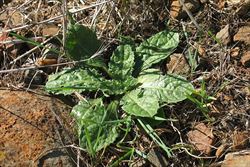
young plant (Photo: Jackie Miles and Max Campbell)
Scientific Name
Carthamus lanatus L.
Family
Asteraceae (Queensland, New South Wales, the ACT, Victoria, Tasmania, Western Australia and the Northern Territory)Compositae (South Australia)
Common Names
distaff thistle, saffron thistle, woolly distaff thistle, woolly safflower, woolly star thistle, woolly star-thistle
Origin
Native to southern Europe and the Mediterranean region (i.e. Egypt, Turkey, Czechoslovakia, Hungary, Switzerland, western Russia, Ukraine, Albania, Bulgaria, Greece, Romania, Yugoslavia, France and Portugal).
Naturalised Distribution
This species is very widely naturalised throughout southern and central Australia (i.e. throughout most of New South Wales and Victoria, in southern and central Queensland, in the southern and eastern parts of South Australia, in the southern and western parts of Western Australia, in the southern parts of the Northern Territory, and in Tasmania and the ACT. Also widely naturalised in other parts of the world.
Notes
Though this species is primarily a weed of disturbed sites, roadsides and agricultural areas (i.e. crops and pastures), it is also widespread in rangelands and natural habitats (e.g. open woodlands, grasslands and conservation areas). Saffron thistle (Carthamus lanatus) is regarded as an environmental weed in all states and territories except Tasmania and is listed as a priority environmental weed in one Natural Resource Management region.

